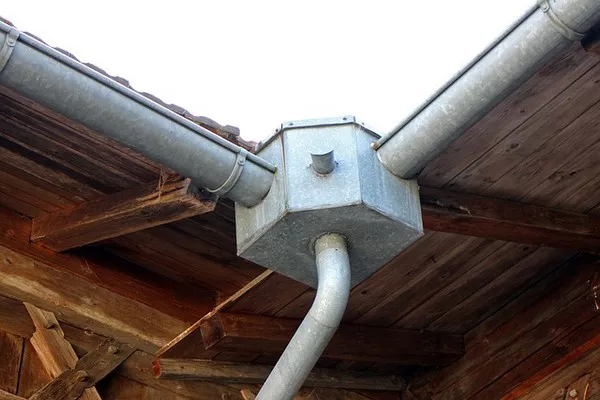Wastewater treatment stands as a pivotal process in maintaining public health, environmental sustainability, and ecological balance. As urbanization and industrialization continue to flourish, the proper management of wastewater becomes increasingly critical. This article delves into the intricate workings of wastewater treatment, shedding light on the various processes involved, the significance of each step, and the broader implications for both human and environmental well-being.
The Need for Wastewater Treatment
Wastewater, also known as sewage, is composed of a complex mixture of contaminants ranging from organic and inorganic matter to pathogens and pollutants. If left untreated, these contaminants pose a serious threat to human health and aquatic ecosystems. Moreover, the discharge of untreated wastewater into water bodies can lead to eutrophication, oxygen depletion, and the destruction of aquatic habitats. Thus, wastewater treatment is a crucial step to prevent waterborne diseases, safeguard the environment, and ensure sustainable water resources.
Primary Treatment
Wastewater treatment typically begins with primary treatment, which is a physical process aimed at removing larger solid particles and reducing the organic load. In primary treatment, wastewater flows into large settling tanks where gravity allows the heavier solids to settle at the bottom as sludge. The partially clarified water, known as effluent, is then collected from the top. This step helps in the removal of approximately 30-40% of suspended solids and a significant portion of organic matter.
Secondary Treatment
Following primary treatment, the effluent undergoes secondary treatment, a biological process designed to further break down the remaining organic matter. This step involves introducing microorganisms, primarily bacteria, that feed on the organic compounds present in the water. These microorganisms convert organic matter into carbon dioxide, water, and additional biomass. This biological activity occurs in aeration tanks, where oxygen is continuously supplied to support the metabolism of the microorganisms. Secondary treatment can remove approximately 85-95% of the organic matter from wastewater, significantly reducing its pollutant load.
Tertiary Treatment
While secondary treatment significantly reduces organic content, it might not effectively remove certain contaminants like nutrients (nitrogen and phosphorus) and pathogens. Tertiary treatment addresses these concerns through additional processes. One common method is the use of chemical treatments or filtration techniques to remove residual suspended solids, nutrients, and microorganisms. Chlorination or ultraviolet (UV) disinfection is often employed to neutralize remaining pathogens, ensuring the treated water meets stringent safety standards before discharge.
Advanced Treatment
In some cases, depending on the level of contamination and the intended reuse of the treated water, advanced treatment processes are implemented. These processes go beyond tertiary treatment and involve more specialized techniques such as membrane filtration, activated carbon adsorption, and advanced oxidation. These methods are particularly relevant in regions facing water scarcity, where treated wastewater can be reclaimed for non-potable purposes like irrigation or industrial processes.
Sludge Treatment and Disposal
The solids that settle during primary treatment, as well as the excess biomass generated during secondary treatment, collectively form sludge. Proper treatment and disposal of sludge are crucial to avoid environmental pollution and health hazards. Sludge undergoes a series of processes, including thickening, dewatering, and stabilization. Thickening reduces the water content, dewatering further removes moisture, and stabilization minimizes the potential for odors and pathogens. Depending on its quality, sludge can be incinerated, composted, or disposed of in landfills. In some cases, it can even be treated and reused as a soil conditioner in agriculture.
Environmental and Societal Impact
The significance of wastewater treatment goes beyond its immediate technical processes. Properly treated wastewater contributes to clean water bodies, which in turn support aquatic life, recreational activities, and local economies. By preventing the release of pollutants and pathogens, treatment facilities safeguard human health and reduce the risk of waterborne diseases. Furthermore, the sustainable management of water resources through wastewater treatment is an essential component of global efforts to achieve the United Nations Sustainable Development Goals, specifically Goal 6 (Clean Water and Sanitation) and Goal 12 (Responsible Consumption and Production).
Challenges and Future Directions
While wastewater treatment has come a long way in ensuring environmental and public health, challenges persist. Aging infrastructure, population growth, and emerging contaminants pose ongoing concerns for wastewater treatment facilities. Moreover, energy consumption and the carbon footprint of treatment processes need to be optimized to minimize their environmental impact.
In response, research is ongoing to develop more energy-efficient and sustainable treatment technologies. Innovations such as anaerobic digestion for energy recovery, the use of constructed wetlands for natural treatment, and the incorporation of artificial intelligence and automation for process optimization are shaping the future of wastewater treatment.
Conclusion
Wastewater treatment is a multidimensional process that combines physical, biological, and chemical techniques to purify wastewater and protect both human health and the environment. The journey from primary treatment through secondary, tertiary, and potentially advanced treatment stages ensures that wastewater is transformed from a potential hazard to a valuable resource. As our world continues to evolve, the effective management of wastewater remains an integral part of building sustainable societies and fostering a healthier planet for current and future generations.

